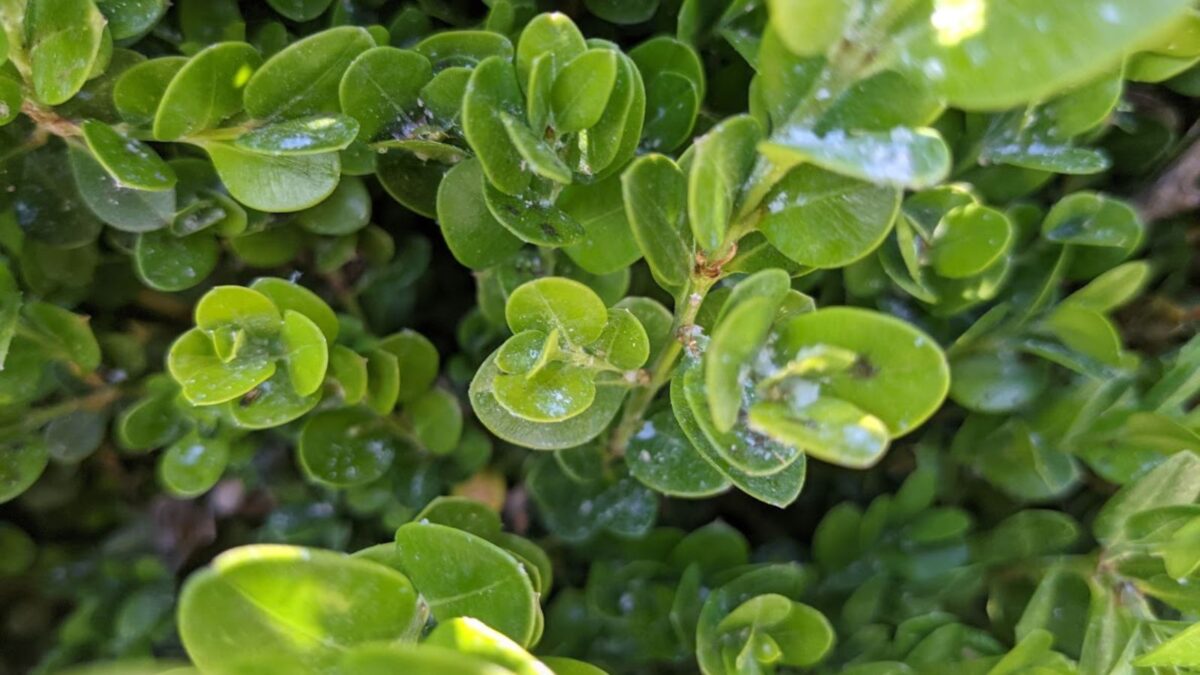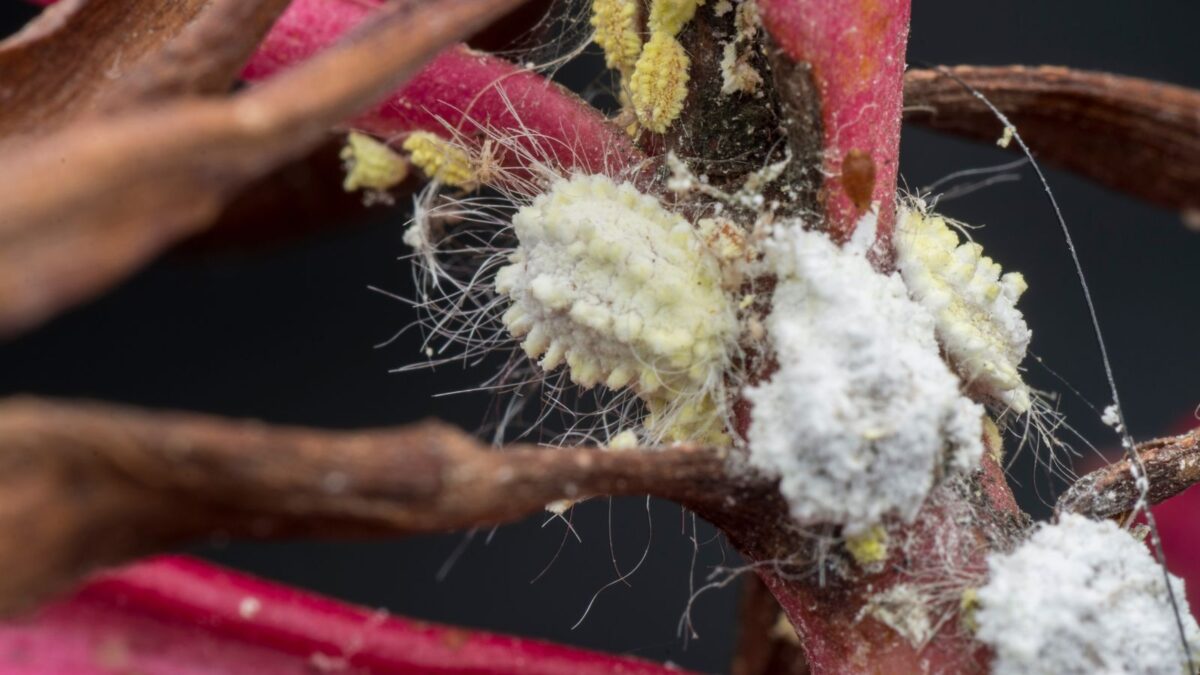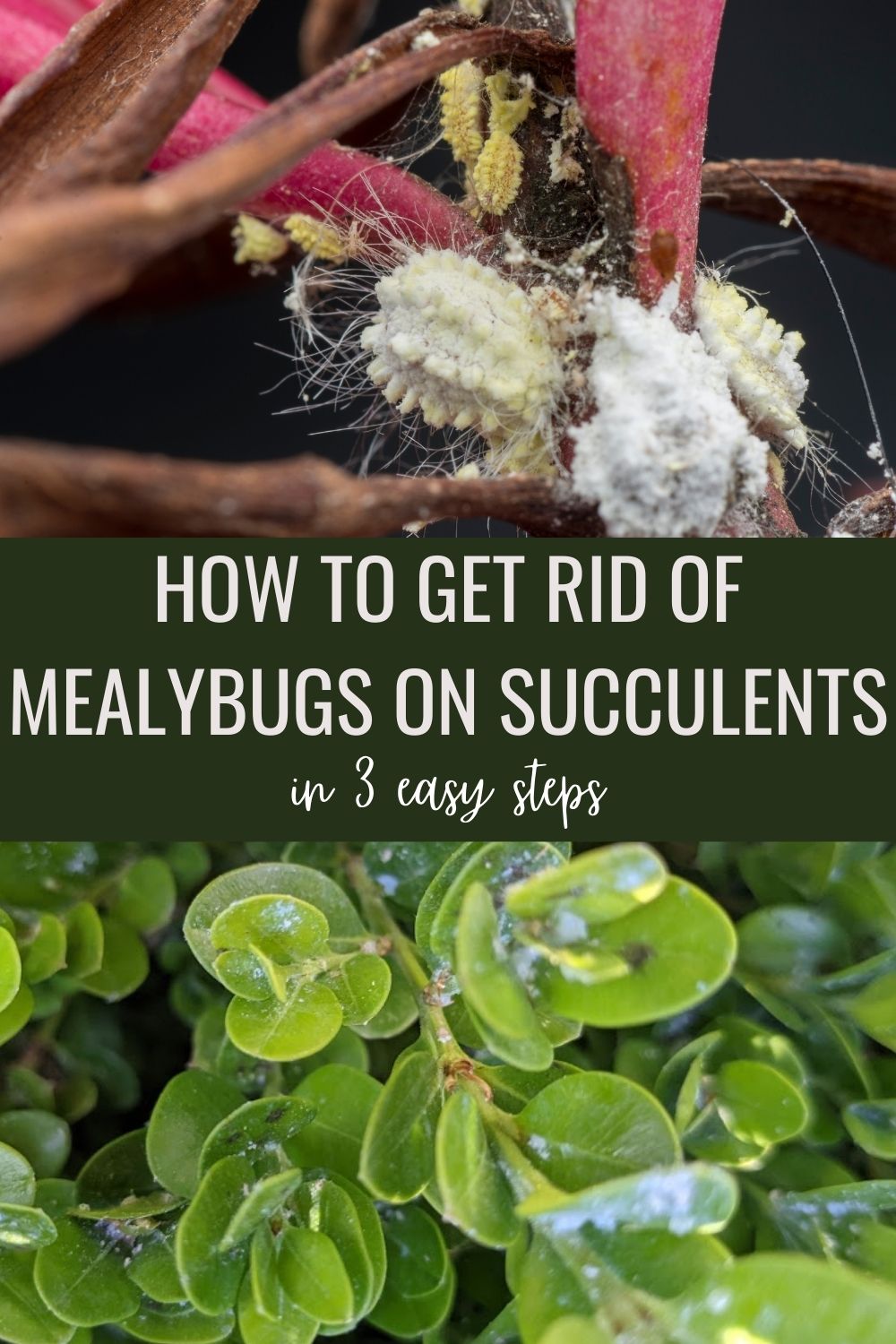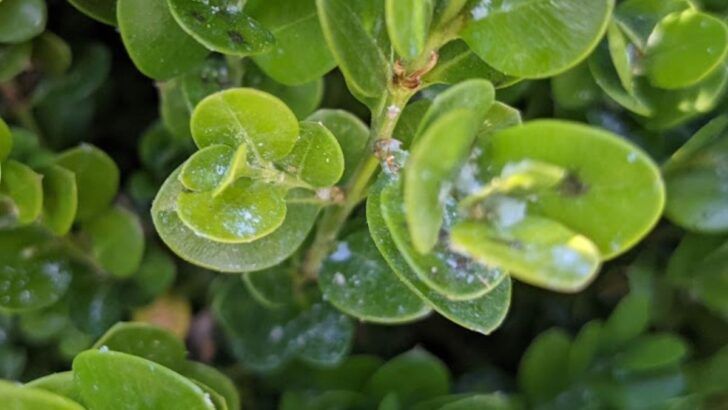Succulents come in many unique varieties and can be so much fun to grow. Not so much fun? A mealybug infestation! These nasty little insects attack succulents indoors and out and can quickly spread from one plant to another if left unchecked. Learn how to get rid of mealybugs on succulents easily and effectively without harming your plants.

What are mealybugs?

As always, you want to properly identify the pest before taking action to control it. In this case, mealybugs are tiny, soft-bodied, sapsucking insects closely related to scale insects. There are actually hundreds of species of mealybugs, though only some of them attack succulents, and they all look essentially the same to the naked eye. Mealybugs prefer warm, humid environments and most often infest houseplants and greenhouses, though in warmer climates, they can cause significant damage outdoors as well.
Signs of mealybug damage
Because they are so small and succulents have so many crevices to hide in, mealybugs may go unnoticed until their first batch of eggs hatches and the infestation becomes larger. The most obvious sign will be a fluffy white wax that looks cottony. This holds the egg masses; some species also cover themselves in the wax.
With a heavy infestation, you may see waxy excretions called honeydew and, of course, damage to the plant itself. Leaves may turn yellow and eventually fall off the plant. New growth can appear stunted.
How to Get Rid of Mealybugs on Succulents
Heavy infestations of mealybugs are more damaging and harder to control, especially since they are likely to spread to other plants at this stage. Take action immediately if you notice even the smallest sign of mealybugs on a succulent. Mealybugs are much easier to eradicate at the early stage, and you can prevent them from spreading.
1. Isolate the infested succulent
Even if you do not have the time to treat a succulent infested with mealybugs right away, separate it from all other plants immediately. Put it in a room with no other plants, or if you don’t have a room without plants, keep it as far away from other plants as possible. This will prevent the mealybugs from spreading. Of course, this is more difficult if the plant is in the ground. In this case, treat the infestation as soon as possible.
2. Treat the infested succulent
The safest, most effective way to get rid of mealybugs on succulents is to spray them with 70% isopropyl alcohol. In other words, rubbing alcohol! Fill a small spray bottle with the rubbing alcohol and spray all of the mealybugs and egg masses. You can also use a cotton swab to dab it on if you prefer.
But wait, won’t the alcohol damage the plant? Actually, no! Rubbing alcohol is completely safe to apply to succulents and will cause no burning or other damage to the leaves. Just make sure to use 70% isopropyl alcohol and not a higher percentage. Bonus: rubbing alcohol is safe to use around pets and kids, too.
You can also use insecticidal soap or neem oil instead, but some gardeners have experienced these burning their succulents, especially if the solution is too highly concentrated. Though natural, these pesticides can also harm beneficial insects in addition to the target pest, so apply them carefully.
3. Monitor the infested succulent
Keep the succulent isolated for a week or so and check for mealybugs daily, reapplying isopropyl alcohol as necessary. A single application may be enough to take out a light infestation of mealybugs, but heavier infestations might need several applications. Keep an eye on any plants that had been near the infested succulent as well, in case mealybugs had spread to any of them.
How to prevent mealybugs on succulents
The first step to preventing any pest or disease is to encourage healthy growth. For succulents, this starts with a well-draining succulent soil mix and a pot with a drainage hole. Then, going forward, take care not to overwater. Minimize feeding if mealybugs become a problem, as they are attracted to high levels of nitrogen. Too much water and fertilizer can also lead to softer leaves, which mealybugs also find attractive.
When you water your succulents, look them over carefully for mealybugs (and any other pests or diseases), and immediately follow the steps listed above for any that show signs of mealybugs. Thoroughly examine any new plants you bring home before taking them into the house or greenhouse to make sure you don’t accidentally introduce mealybugs that way.
If you frequently struggle with mealybugs, keep a small spray bottle of 70% isopropyl alcohol near your succulents. Then, when you see mealybugs, you have the alcohol ready to spray on them.
Mealybugs are a disheartening sight, but you don’t have to throw out your succulents if they become infested. A simple application of rubbing alcohol can help save your beloved plants!
Learn More About Growing Succulents
- How To Grow Succulents Indoors
- How Often Should I Water My Succulent?
- 14 Beautiful Flowering Succulent Plants for Your Home or Garden
- 19 Best Purple Succulent Plants for Your Garden
- 14 Pretty Pink Succulent Plants To Brighten Your Home
- 9 Spectacular Succulent Garden Ideas



